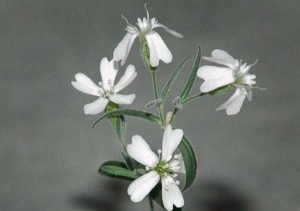 Melting permafrost is not helping climate change, as it gives off gusts of globe-warming methane. But the world’s scientists are finding a treasure trove in areas where the snow melts.
Melting permafrost is not helping climate change, as it gives off gusts of globe-warming methane. But the world’s scientists are finding a treasure trove in areas where the snow melts.
A team at the Institute of Physicochemical and Biological Problems in Soil Science, Russian Academy of Sciences in Moscow, Russia discovered – in a fossilized squirrel burrow in Siberia – remnants of the ice-age flowering plant Silene stenophylla. The plant had been buried at a depth of 38 meters in sediments with a temperature of ?7°.
Radiocarbon dating of the plants seemed to show that an ancient squirrel stashed them around 31,800 years ago, just before ice rolled into the area near the Kolya river.
Scientists used growth hormone to coax silene stenophylla back to life and eventually, back to bloom. They are now, according to the Proceedings of the National Academy of Sciences report ” the most ancient, viable, multicellular, living organisms.”
The discoveries of this ‘ancient DNA’ as permafrost in colder regions melts is becoming a trend. Sometimes, seed finds turn out to have been deposited much later than scientists first believe, but the Soil Cryptology Lab in Moscow went to some lengths to ascertain that silene stenophylla‘s seeds were really as old as they seemed to be.
As permafrost melts, there will be more finds like silene stenophylla, and some scientists think ancient seeds might even begin to bloom spontaneously, giving hope that previous extinct varieties of plants will come back to life.
And if not, there’s always Norway’s seed vault to provide some genetic info.